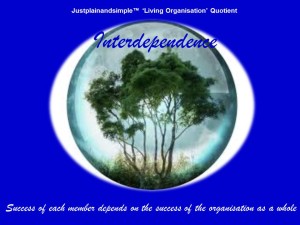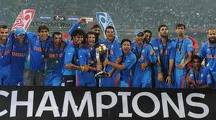
1,933 total views, 1 views today
No Tall Claims. No Big Promises. No Lofty Vision.
Justplainandsimple ….. Serving to Help Realise
Business, Professional and Personal Potential …..


1,933 total views, 1 views today
 Let’s ask any entrepreneur the question : Why does your business exist ??
Let’s ask any entrepreneur the question : Why does your business exist ??
Their answers will get bucketed in only two Justplainandsimple™ reasons and in this order :
1)Creating Value for the customer
2)Creating ROI for the Owner
Only if the customers see value, will more of them buy your products and services (n); more frequently (f) and pay you more (p). The cumulative product of these is Revenue (R) i.e. n X f X p. So, value creation is a necessary condition !!
If the entrepreneur does not make a return on his/her resources (after and inspite of and because of providing Value to the customer), there is no reason for them to be in business. Simply put, there could be other uses they can put their resources to, with better risk weighted returns.
However, one could argue, that there is another case/option of Creating Value without looking for returns. A ‘charity/donation’ framework !? This has different implications, which may not be sustainable too. A lot of ‘not for profit’ organisations get caught in this trap. Let’s use this as an example at one end of the spectrum to demonstrate a point.
The logic works like this. It is a ‘not for profit’ organisation, so profit is not an objective to be sought.
Hence, starting at the top of the P&L, fine tuning and polishing the Value Offering to yield optimal R = n X f X p loses significance. This leads to suboptimal product/service offerings coming from this sector. No wonder so many ‘charity’ organisations have gathered a connotation of sub standard offerings.
Next casualty in line is productivity. Since it is ‘not for profit’, squeezing every expense line for productivity is not key. This takes a very critical role in a ‘for profit’ organization.
Hence what flows down at the base of the P&L, is ‘NO PROFIT’ ….. a self fulfilling prophecy !! From where do resources come for funding the loss or resources for growing the scale or further expansion of scope ?? More donation !! Sustainability is affected.
What is needed to flow out, even in such an example of a ‘not for profit’, is a SURPLUS at the base of the P&L after revenues and expenses have been churned. Whatever purpose that surplus maybe put to. Not for returns to owners, but for building scale, for reaching more beneficiaries, for further investments ….. !?
So whether we call it ‘profit’ or ‘surplus’ the significance is clear. QED.
Reasonable surplus or how much is enough, is a matter for another debate related to human greed and we keep it out of the scope of this discussion for the time being. Needless to say, Profit or surplus is a necessary but not sufficient condition. Therefore we have new concepts of triple bottom line coming up : profit, people and planet.
If profit is a requirement that has to be met, we get answers in the way we define it. Right in the beginning of this article, I indicated the second reason for the existence of businesses to be ‘creating ROI for the owner’.
The entrepreneur is looking for ROI. So relative ROIs from different opportunities are compared and investments made. Defining profit this way, helps us in understanding and resolving this issue creatively.
Profit cannot be made mathematically by increasing prices and cutting expenses. Pricing the product to the market is the key. More customers (n) are not going to pay more (p) or buy more frequently (f) than the value they attach to the offering.
Also, you cannot cost cut your way to glory. There will be expenses, there will be costs. Understanding ‘what adds most value to the customer’, to empathise, allows the business to focus and allocate expenses in areas that are important for value creation and hence to reap benefits of leverage and productivity ….. this is rewarded by the right customers (n) buying at the right frequency (f) at the right price (p) !!
Fundamentally, business is ‘philosophy’, not mathematics.
The answer to ‘Profits in low income markets’ therefore lies in creativity and innovation. To find ways of increasing productivity, efficiency and effectiveness.
Nature teaches us various ways in which a dynamic balance is maintained in ecosystems. An organism (organization) picks up signals from its environment (market reading) and makes structural changes within to respond intelligently and in turn influences the environment. This enables it to learn, co-exist and evolve continuously. The story of evolution is a story of collaboration of species and co-existing/co-evolving symbiotically.
Who influences whom then ? The environment and organism keep the whole ecosystem in a harmonious dynamic balance, playing a continuous dance !! So also should organisations and low income markets ….. a continuous dance of celebrating harmony in an interdependent partnership ….. with flexibility and respecting and honouring integrity and diversity in action !!
This was first published in the Ennovent Blog: Innovations for Sustainability
3,651 total views, no views today
 (Views expressed in this post are entirely my own)
(Views expressed in this post are entirely my own)
The picture on the left is after a World Cup Final Win !! Noticeable by his absence, is the captain, MS Dhoni. And this is a pattern that gets repeated so often. He could have stolen the limelight at innumerable occasions that came up for him, if he was an egoist.
But some people say he is an egoist;
And they are honourable men….
He hath brought many laurels to Indian cricket,
Which is definitely at an elevated level now than then …..
Yet, after Dhoni’s recent decision to retire from test cricket, certain sections of media, society and sports criticized him for his ego. And these are ‘honourable men’ !!
With the best of leaders,
When the work is done,
The project completed,
The people all say
“We did it ourselves”
(Tao, 17)
As a student of Leadership, I follow the continuous debate on MS Dhoni with great interest. While theories on Leadership abound, with a personality like Dhoni, the discussion becomes even more intriguing and exciting. A Justplainandsimple™ patented view on leadership is :
Leadership is like an exhaust fan; creating An Energy Flow quietly on the sideTM
This, I also found to be quite an apt description of our Captain Cool’s leadership style.
The recent two test losses (and many previous wins) in Australia have brought in a lot of flak for him. At the same time raised more debates ….. of the type ‘Is Dhoni more successful than Saurav ?’ Can there be a comparison with Gavaskar and Kapil of the 80s ? ….. and so on ….. While some of these may not be valid, as eras and circumstances have changed a lot, others may also be of a speculative nature.
But one thing is certain ….. Dhoni definitely HAS built further on the successes of earlier giants. Also, when he took over as captain the team had really strong players like Sachin, Sehwag, Dravid, Laxman, Harbhajan et al. And to sustain and build further on existing strengths is surely VERY VERY CREDITABLE !! Over the shoulders of giants …..
A study on successful Indian CEOs, conducted some years back, highlighted key characteristics exhibited by these people in various business situations. It is quite relevant in this discussion due to commonality of Indian mindsets, social contexts, ecosystem etc. ….. and topicality
I bring up the characteristics again at this point in time.
The ones that I want to highlight, are those characteristics that were displayed by business leaders in ‘Improving a Business’ situations. I list these below for comparisons with our hero of the day :
M : Maturity : Emotional Wisdom and Intelligence to respond to others and embody the aspirations of the organization. Captain Cool is calm and composed in both praise and criticism, describing these as being ephemeral. In a country where emotions run extreme, he maintained the same equanimity after World Cup wins and defeats in England and Australia.
S : Transcending Self & Inner Strength : Courageous dedication to the super-ordinate goals; doing what is right and what will make Indian cricket great. We’ve seen him exhibiting ‘edge’ ….. an ability to face reality and to champion tough decisions.
D : Driving Change : Leading the organization to implement and embed sustainable change. Enough evidence in decisions related to strategy and people.
H : High Energy Team Leadership : Inspiring and protecting the team, enabling excellent team performance. His inspiration to the team and ability to lead by example. Virat Kohli, Suresh Raina, R Ashwin, Bhuvneswar Kumar, Ravindra Jadeja, Cheteswar Pujara and Praveen Kumar all flowered under him.
O : Ownership and Empowerment with Accountability : Delegating authority to allow others to act with purpose and accountability. In extremely testing circumstances, Dhoni has come up with brilliant performances himself and has also empowered the team and youngsters with enough confidence and a free hand.
N : Networking & Organisational Awareness : Reaching out to an extensive network for ideas and problem-solving; understanding how things get decided and done in a particular organization. He sure has found his way around very gracefully and effectively.
I : Stakeholder Influence : Using customized strategies to influence specific stakeholders. In his own way, with poise and equanimity, we see his influence creating magic.
A point to keep in mind though, is that leaders are human beings. So if Dhoni does have a bad patch, it is quite normal. Leaders can slip, leaders can make mistakes, leaders have bad days, leaders change their minds, leaders are you and me. Good leaders are ordinary people who want to get better than ordinary results. They are not happy with getting by because they know that the world is constantly changing, evolving and what worked yesterday might not work today.
Leaders are on an adventure with an uncertain future, more so in today’s VUCA world. Leaders are not better than followers, leaders are not gods, gurus or prophets. We shouldn’t put them on a pedestal and worship them, for two reasons ….. (1) they will forget what it’s like in the real world and a leader living in yesterday’s world is a train wreck waiting to happen (2) it stops us, the rest of us, from trusting ourselves and doing the hard work .
In short we all need to be ordinary people who work together to get better than ordinary results ….. like this boy from Ranchi has demonstrated !!
The wise leader knows When enough is enough.
Stretch a bow too far And it will snap.
Sharpen a knife too much And its edge will not last.
Fill your house with gold and jade, A
nd you cannot defend it.
Exalting in your success Invites a certain fall.
When your work is done, it is time to move on.
(Tao, 9)
3,567 total views, no views today
How is it that certain teams achieve extraordinary excellence, day after day, year after year and manage to stay committed to each other, their customers and their organization’s mission ?
A healthcare start up ….. successful doctors, experienced healthcare professionals and a seasoned healthcare entrepreneur got together. Hired people with rich experience in healthcare. Much excitement and hope !! Great Aspirations …..
The only issue ….. aspirations were on different vectors.
Six months from start, issues erupted. Differences on ‘What to do’?; ‘How to do ?’; ‘Who does ?’ ….. Everything.
Difference of opinion should be welcome and healthy discussions throw up agreed and effective directions.
Instead bitterness creeped in; operations stalled; could not see/talk to each other. All within one year.
Reason : Each of the ‘promoters/founders’ joined in with a different agenda, thought process, assumptions. On the surface all looked ‘Rosy’ ….. A new start up healthcare business in the age of healthcare, by people experienced healthcare.!!
The core was never discussed. A ‘Shared Mission’ was never there.
Reasons to get together were as many as the number of people who got together ….. valuation in ‘X’ years, gain startup credentials, clinical excellence, long term business, more leisure time ….. and so on
The mission was aborted within 18 months and all went their own ways …..
In another well run set up, absence of a shared sense of Values and Direction created a severe deadlock, stalling all operations for a long period of time, demotivating the team, forcing many to leave.
The fact is that while all teams are groups, not all groups are teams. A group becomes a true team only when its members support and enhance each other’s performance and contributions … when they work together to achieve results that are bigger and better than those that could be realized individually
Build a team of people with complementary skills who are committed to a common purpose, performance goals, and approach for which they hold themselves mutually accountable ~ team definition by Katzenbach/Smith
Just as your car runs more smoothly and requires less energy to go faster and farther when the wheels are in perfect alignment, you perform better when your thoughts, feelings, emotions, goals, and values are in balance.
2,408 total views, 1 views today
 There is so much buzz surrounding healthcare today. And rightly so. Healthcare is on a growth path.
There is so much buzz surrounding healthcare today. And rightly so. Healthcare is on a growth path.
All eyes are focused on the healthcare success stories. For gaining valuable learnings and for valuation gains !!
Lost somewhere in the melee are stories of slips that can give equally significant insights.
Without disclosing the identity, here is one such case …..
A new unit, started slow and steady with one healthcare speciality and progressed well. Led by an enthusiastic entrepreneur, full of passion and ambition, ready to take risks. All the correct ingredients it seems.
The enthusiasm led to related diversification into other healthcare verticals.
Two years into this mode, growth started slowing down and profits started getting eroded.
Good brand equity, doctors, patient satisfaction, advertising spends, infrastructure ….. nothing seemed to be wrong.
Root cause analysis brought up a peculiar core issue, generally very difficult to accept by any business leader ….. that the leader lacked the ability to handle multiple business operations.
Adaptive Thinking, Empowerment with Accountability, Execution Excellence, Networking and Executive Maturity were the development areas that the leader could have sought help in and built on, to Realise Business, Professional and Personal Potential.
More cases …..
3,608 total views, 1 views today